by David Stockman via InternationalMan.com,
Recently, the Wall Street Journal pulled no punches with respect to the soaring cost of homeownership:
Homeownership has become a pipe dream for more Americans, even those who could afford to buy just a few years ago...
...it is now less affordable than any time in recent history to buy a home, and the math isn’t changing any time soon...
That means buyers get a lot less home for their dollar.
Before the Fed started raising rates, a person with a monthly housing budget of $2,000 could have bought a home valued at more than $400,000.
Today, that same buyer would need to find a home valued at $295,000 or less.
And, yes, you can blame the Fed for this baleful state of affairs, but not owing to the normal complaint that mortgage rates are too high. Nor could the problem be remedied by government-imposed mortgage interest rate caps.
Actually, true mortgage rates are still sub-normal. What is way too high are home prices, and that condition is absolutely attributable to decades of interest rate repression, which is now taking a second bite of the apple owing to a severe, cheap-mortgage “lock-in” effect that is keeping millions of homes off the market.
With respect to super-cheap mortgage rates during the past decade and more, the home price inflation mechanism is simple: Homes are the quintessential leveraged asset—with current outstanding mortgage debt equal to nearly $13 trillion. Accordingly, the marginal bid for properties is heavily debt financed, meaning that the lower real interest rates, the higher the market-clearing price of properties.
But now that home prices have been driven sky-high by cheap mortgage debt, prospective home buyers are being monkey-hammered by an economic double whammy. To wit, instead of going down as interest rates rise per the normal laws of economics, home prices are still going up owing to artificially scarce availability of units for sale. So when you multiply a higher mortgage rate times even higher home prices you get monthly mortgage payments that are way out of reach for an increasing share of US households.
What we are dealing with here, of course, are the purportedly “unintended” but predictable effects of the Fed’s heavy-handed attempts to set interest rates below—and usually deeply below—market-based levels. That is to say, the Eccles Building may not have intended to cause soaring home prices or to now cause owners to keep properties off the market in order to preserve low long-term mortgage rates, but that’s exactly what their foolish interest rate pegging policies have caused to happen.
So let’s unpack this Fed-caused mess one component at a time. At the current 7.5% nominal level, 30-year mortgage rates may seem high compared to the recent past, but viewed in the context of the last three decades they clearly are not.
That is to say, when a 7.5% mortgage rate becomes tantamount to a crisis, then something else is wrong. After all, between 1998 and 2007 the mortgage rate was well above current levels most of the time, but the housing market nonetheless boomed. Existing home sales averaged 6.0 million units per year (dotted line) and never fell below 5 million compared to the October 2023 level of just 3.79 million units.
Existing US Home Sales, 1998 to 2007 (000s)
What is of greater salience, of course, is the inflation-adjusted mortgage rate since inflation tends to bloat both costs and income. Yet on this key metric, the current inflation-adjusted 30-year mortgage rate (purple line) of +2.52% is actually lower than at any time before Q3 2011. It appears elevated only by comparison to the aberration caused by the Fed’s frenzied money-pumping campaign during the pandemic when the real mortgage rate touched bottom at an absurd and utterly unsustainable -2.0% in Q1 2022.
In other words, save for a few months during the Washington-fostered financial insanity of 2020-2021, inflation adjusted mortgage rates today are at their lowest level in the last 25 years!
That surely can’t constitute a crisis.
Nominal Versus Inflation-Adjusted 30-Year Mortgage Rate, 1998 to 2023
The actual crisis, of course, is on the home price side of the equation, where inflationary infirmities have been building for five decades. To wit, during the 50-years since Q1 1973 home prices (purple line) have risen by nearly 1,300% or by double the 610% gain in the CPI (red line).
Moreover, it is also evident from the chart that the thundering lesson of the 2007-2009 housing crash did not stick. After bottoming in Q1 2009, the median sales price of US homes rebounded by 130% by the peak of the pandemic stimulus in Q4 2022.
Change In Median US Home Sales Price Versus CPI, 1973 to 2023
Needless to say, if wages had stayed reasonably ahead of the general CPI inflation, the above relentless rise in median home prices would have been bad enough. But as it happened, average wages have gone nowhere in real terms for the past half-century.
Accordingly, this comparison of the inflation-adjusted hourly wage rate with the inflation-adjusted median home price is surely one for the book of freaky records. That is, during the last five decades the inflation-adjusted average wage (black line) has risen by just 1%. And to be clear, we are referring to the entire 50-year period, not a 1% annual increase.
By contrast, the inflation-adjusted median home price (purple line) has gained 100%. That’s right. Real home price gains have outpaced real wage gains by 100X. Is it any wonder, therefore, that even the economically normalized real interest rates of the past few months have precipitated a housing affordability crisis?
The fact is, there is too much “price” in the monthly mortgage payment equation, not too much “rate”.
Real Average Wage Versus Real Median Home Price, 1973 to 2023
Stated differently, in Q1 1973 it took 3.9 years of work at the average hourly wage ($4.14 per hour) to equal the median home sales price ($32,600). That figure stood at 8.3 years in 2022.
Not surprisingly, therefore, the Home Affordability Index of the National Association Of Realtors is currently at a 37-year low.
US Fixed Housing Affordability Index data by ZeroHedge
Needless to say, the Fed’s post-2000 money-printing spree has delivered the coup d’ grace for housing affordability. The last time 30-year mortgage rates (black line) were above 7% was Q1 2001, when the median home price (purple line) stood at just $179,000.
Currently, the median home price stands 140% higher at $431,000. Accordingly, the additional interest on the added price, assuming 80% loan-to-value, is more than $15,000 per year.
30-Year Mortgage Rate Versus Median Home Price, 2001 to 2023
Needless to say, the concept of “mortgage rate prisoner” is not simply a catchy metaphor. Current data on interest rate levels on outstanding home mortgages leaves little to the imagination. As of the first quarter of 2023, a striking 95.2% of outstanding mortgages were fixed-rate loans. On a dollar volume basis, a staggering 70% of these loans are locked in at interest rates of 4% or lower, while nearly 30% are at less than 3.0%.
In dollars and cents terms we are not talking about small economic potatoes here. There are nearly $13 trillion of home mortgages outstanding, meaning that upwards of $9.0 trillion carry interest rates below 4%. Based on the data, the average rate on these low-rate mortgages wouldn’t be much above 3.3%, meaning that the interest carry-cost difference compared to the current market rate of 7.5% is upwards of $400 billion per annum.
Moreover, the average interest rate across all mortgages currently stands at just 3.7%. That means the average current mortgage holder is paying a rate only 49% of today’s market rate for new mortgages. So when it comes to market distortion and lock-in effects, this is one for the history books, too.
Of course, the question recurs as to whether all this distortion—-windfalls earlier and lock-in effects now—was worth the bother. We’d suggest the data below implies a resounding, no!
After all, the purpose of artificially suppressing mortgage rates over the past several decades was to goose the rate of new housing investment and construction. But in no way, shape or form did that happen. On a housing completions per capita basis, the level today is 55% lower than it was in 1971, when Tricky Dick Nixon put the FOMC in charge of the value of our money.
Per Capita New Housing Unit Completions, 1971 to 2023
So to repeat, the Fed’s relentless money-pumping and interest rate falsification did have one clear effect on housing, albeit not the Keynesian claim that it produced more housing units for the people. What it actually did was inflate housing prices to a fare-the-well. That is, it drove-up the price of existing assets, not the level of investment in new assets.
And now that the Fed is finally being forced to lean hard into the wind of inflation, the traditional dream of home ownership is truly out of reach for a growing majority of US households: Rates are high, supply is low, prices are still rising, and affordability has become prohibitive.
That’s still another reason to take the keys to the open market desk away from the monetary central planners at the Eccles Building. Attempting to peg and micromanage interest rates generates for more harm than good.
Besides, as we have shown elsewhere, a discount window providing Fed credit at market rates plus a penalty spread to member banks would provide more than enough liquidity backstop for today’s financial system. And it would operate passively, driven by market forces and the generation of new economic production and commercial collateral.
Most importantly, asset bubbles, main street inflation and systematic malinvestment wouldn’t happen - even as the opportunity for homeownership would once again come into reach of middle-class households.
https://www.zerohedge.com/personal-finance/stockmanhow-fed-wrecked-dream-homeownership

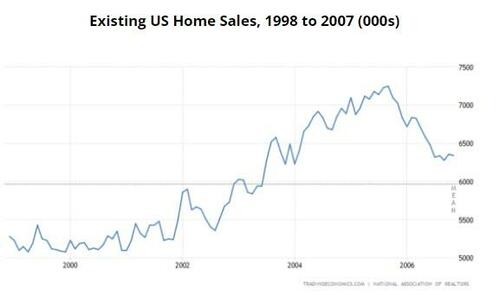
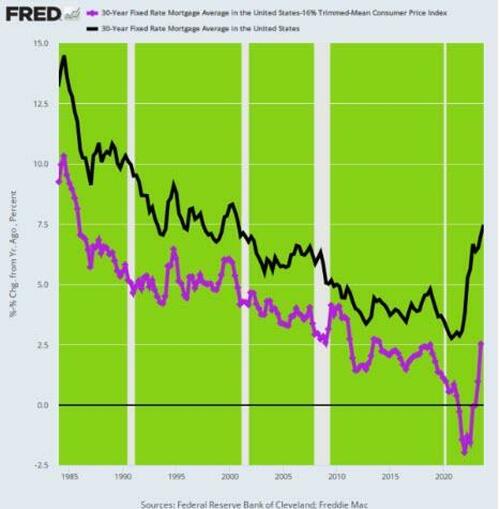

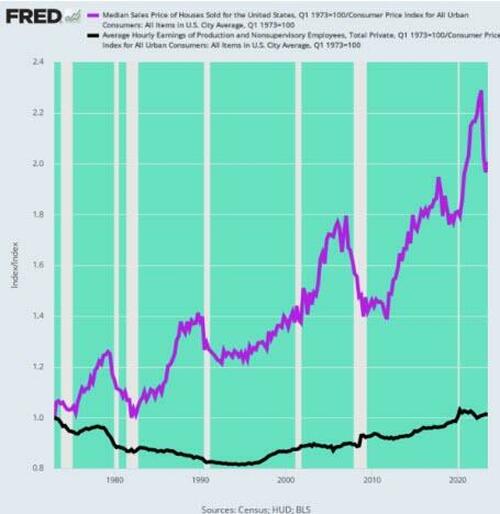


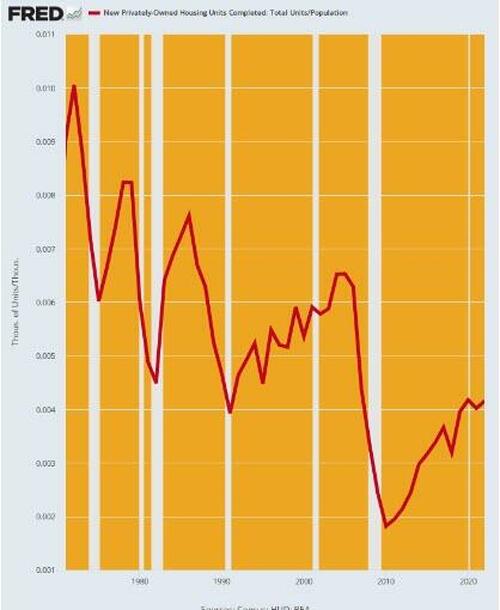
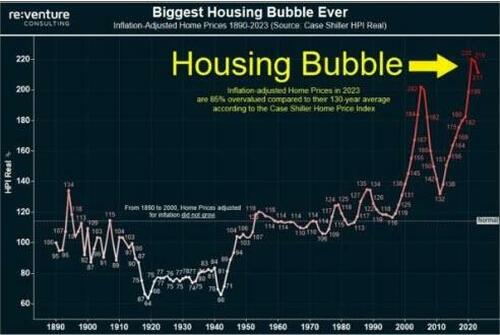
No comments:
Post a Comment